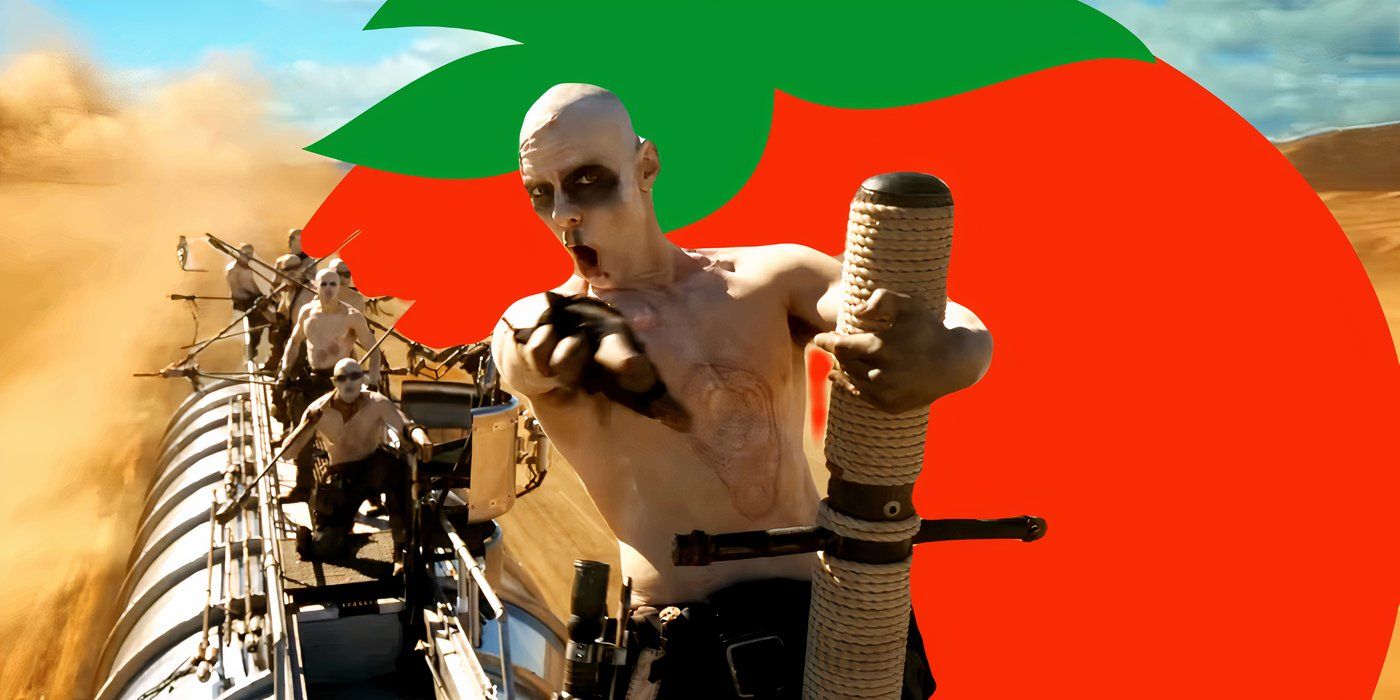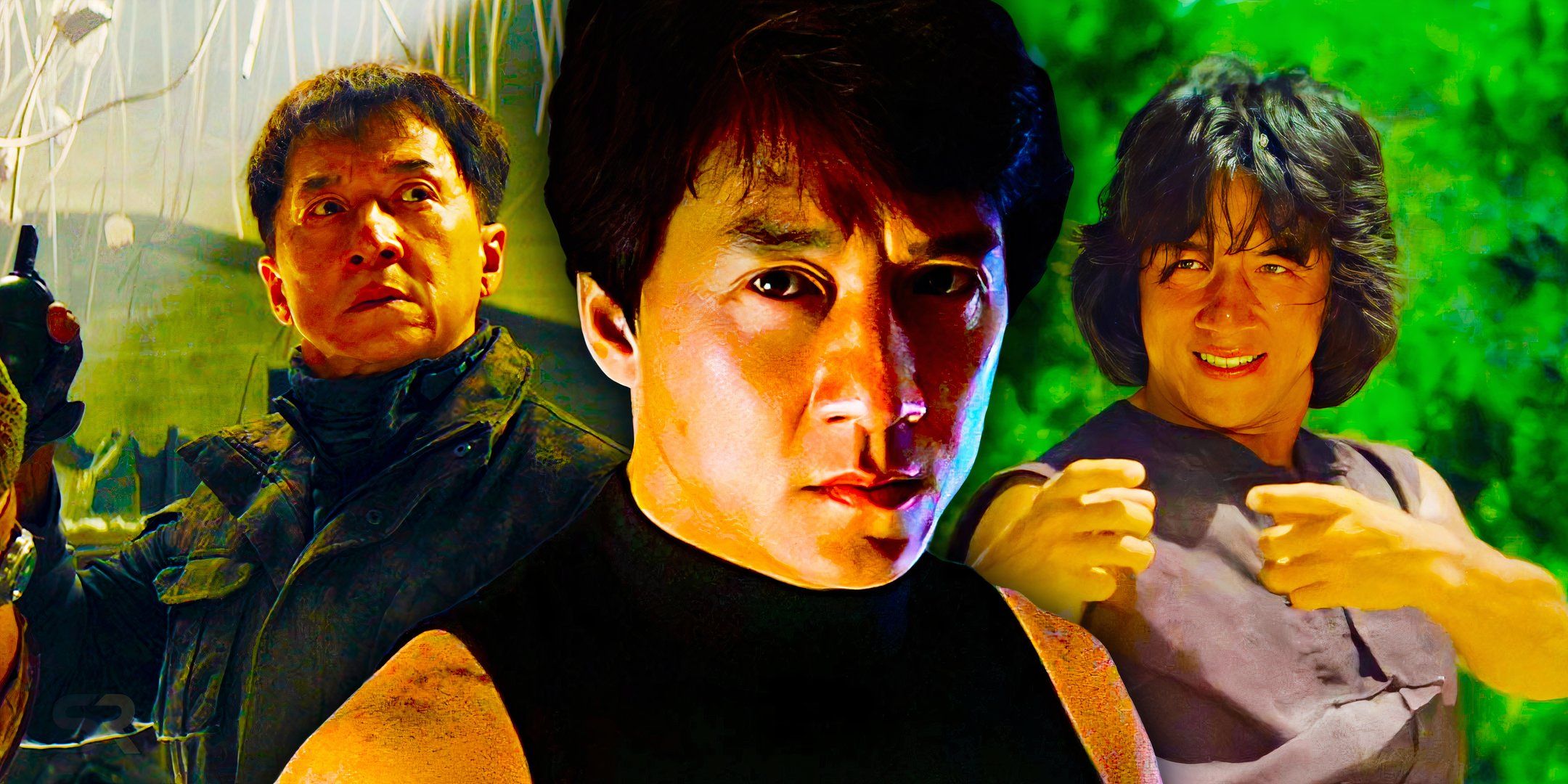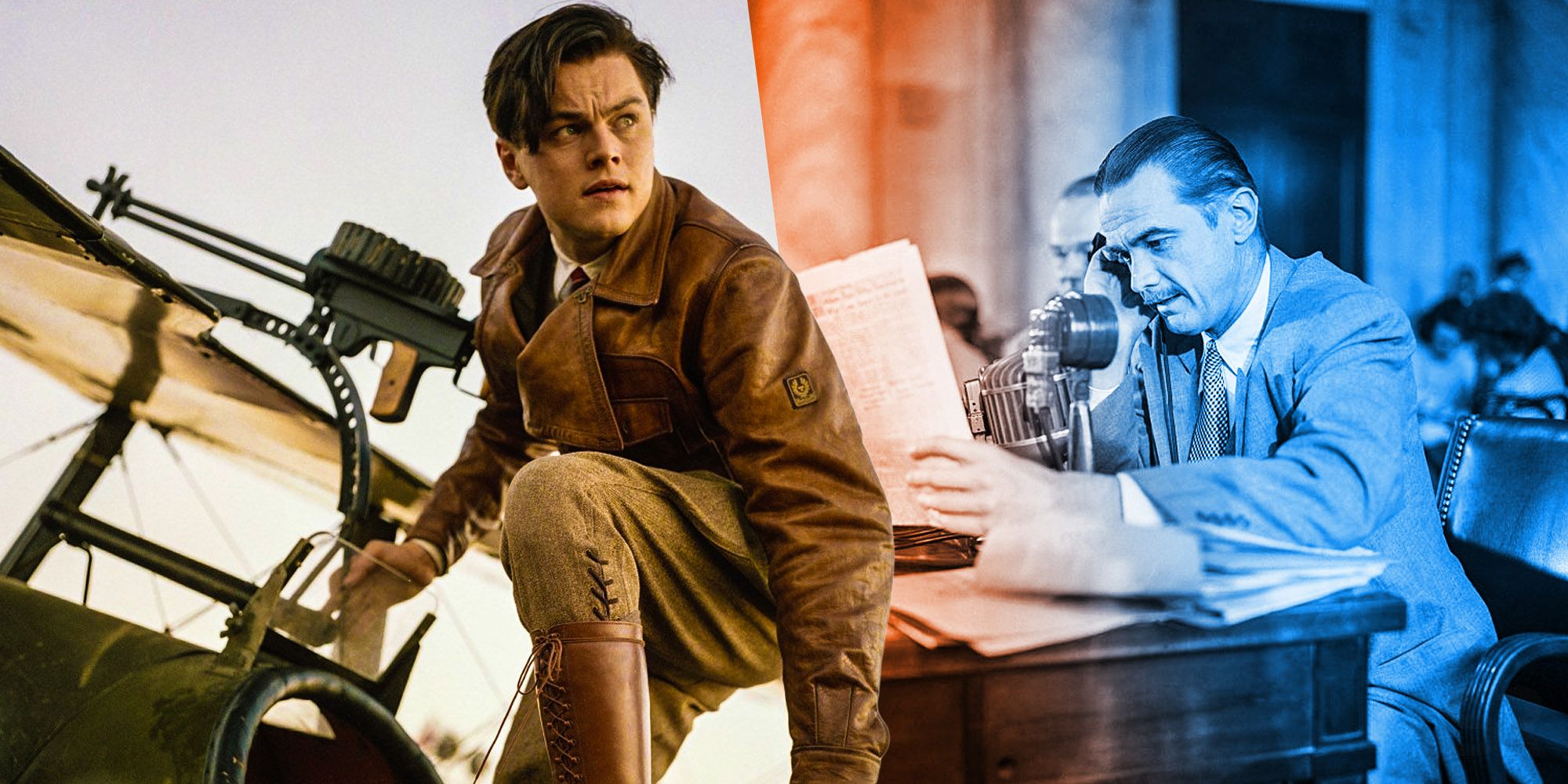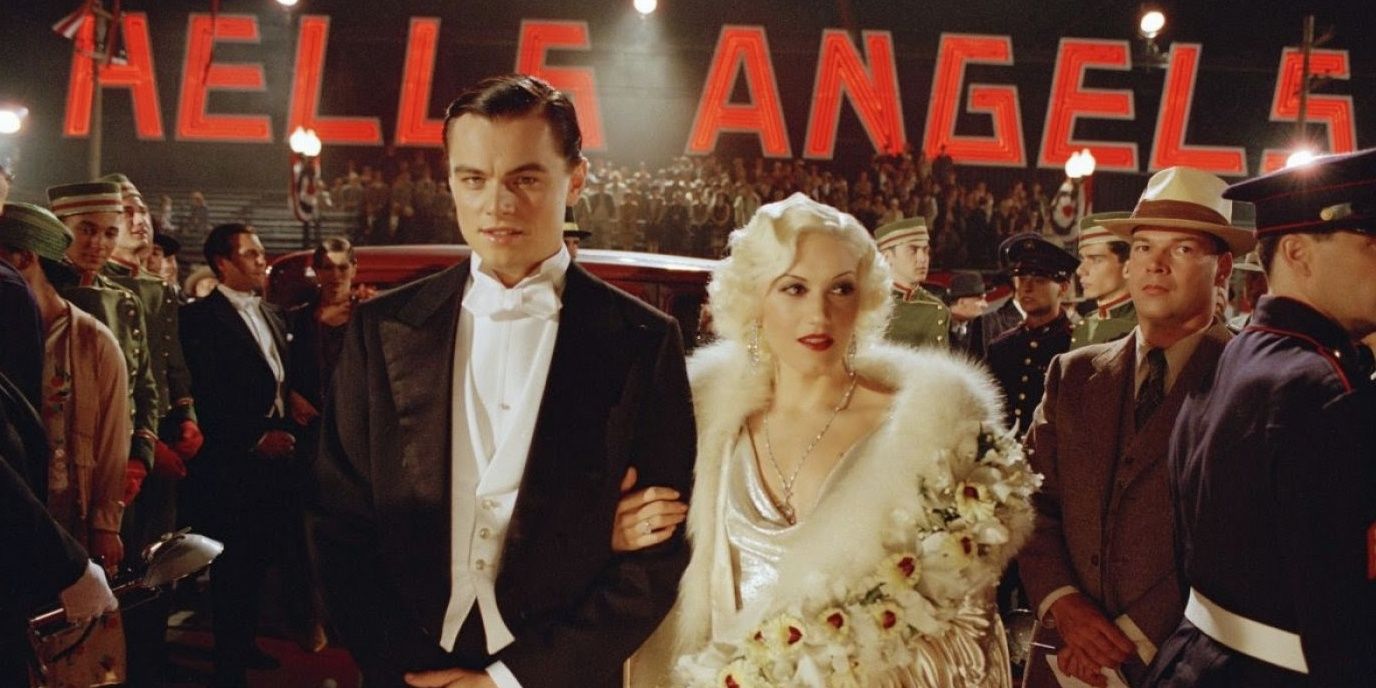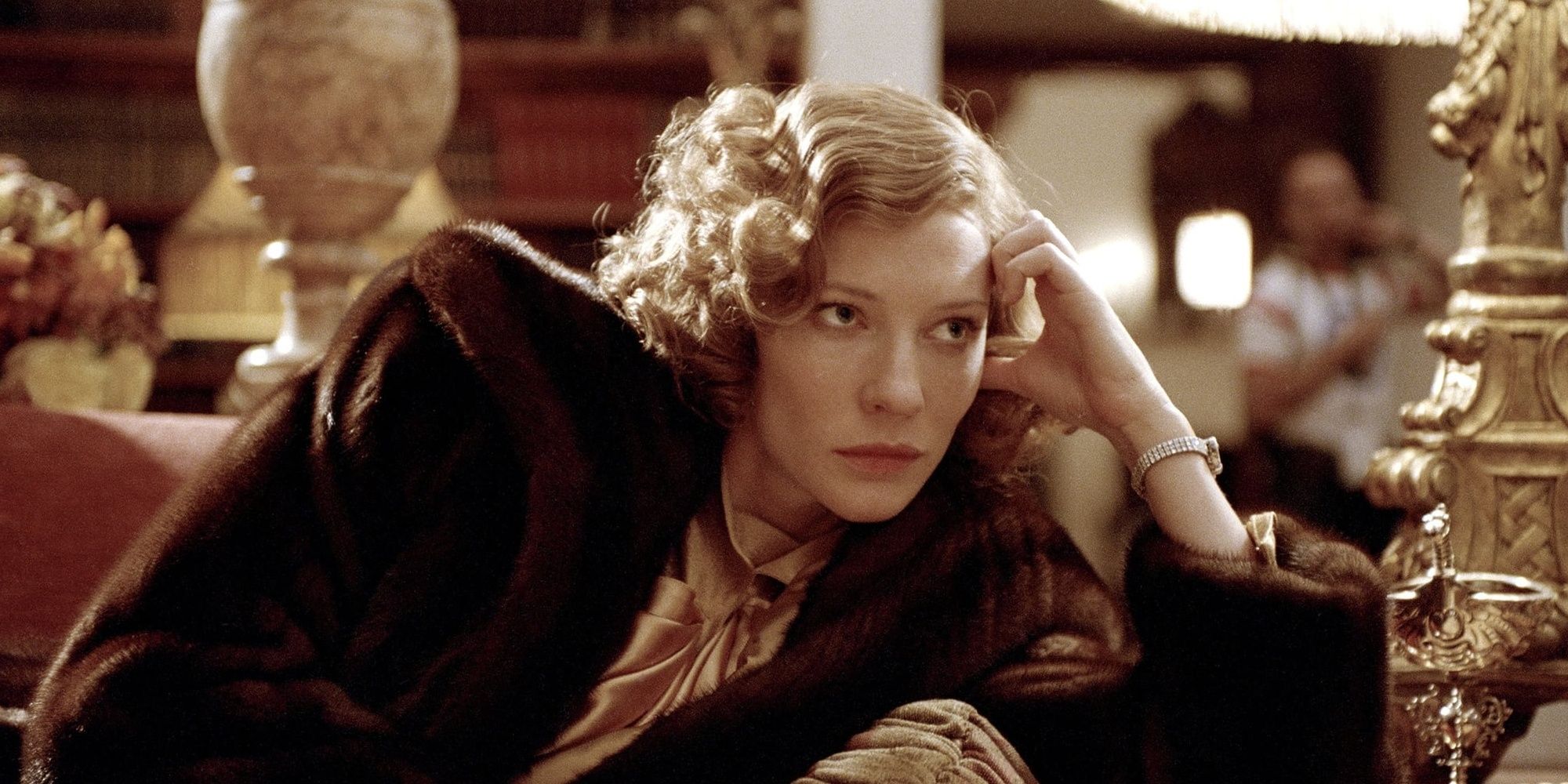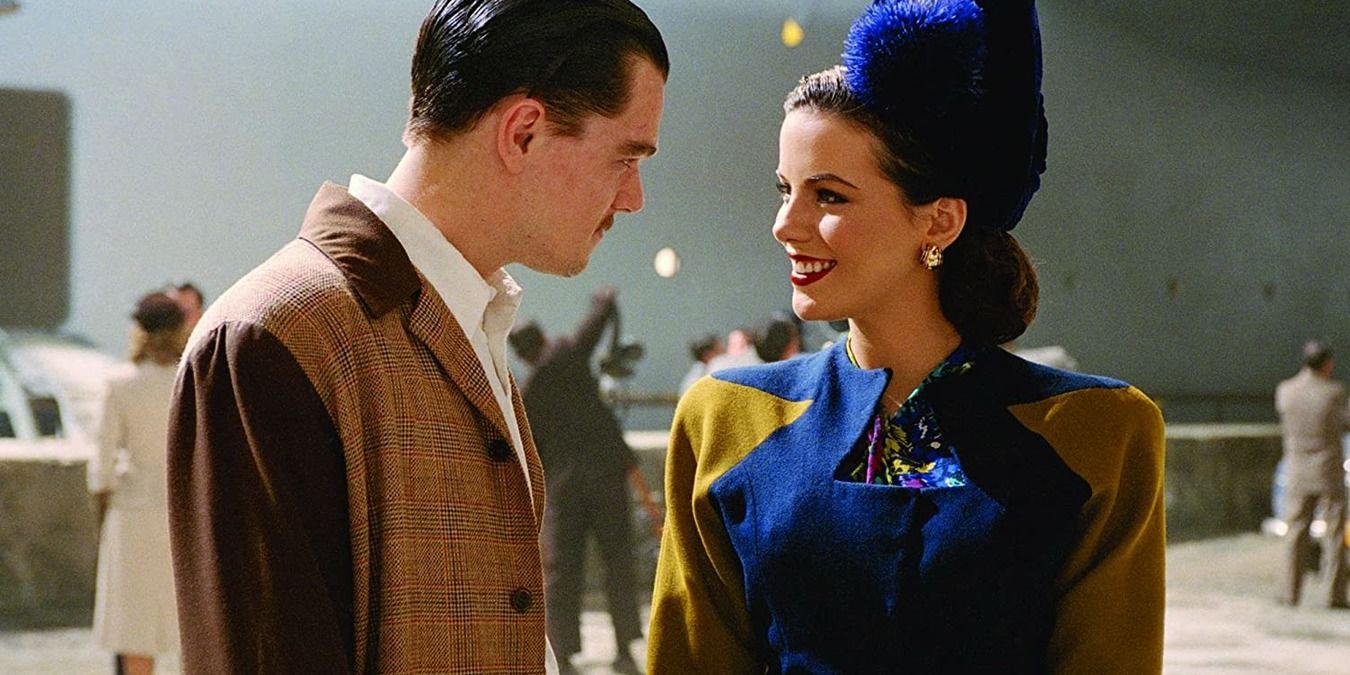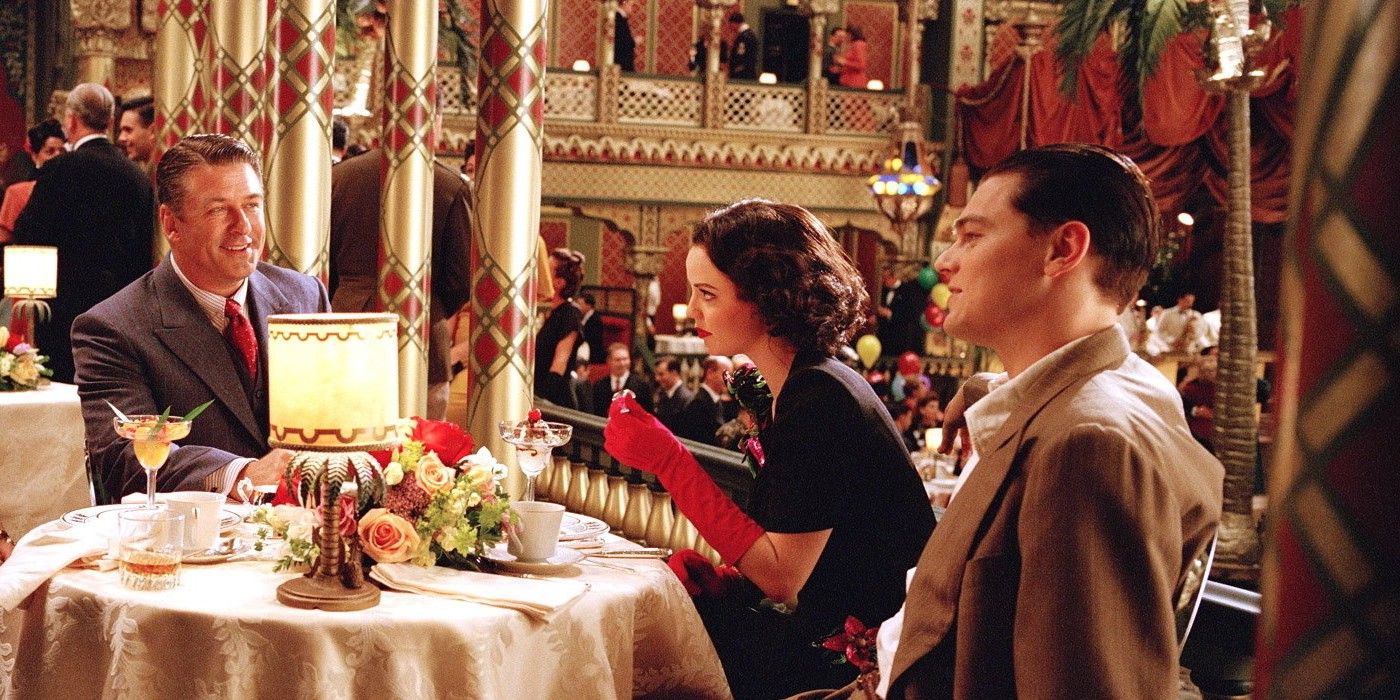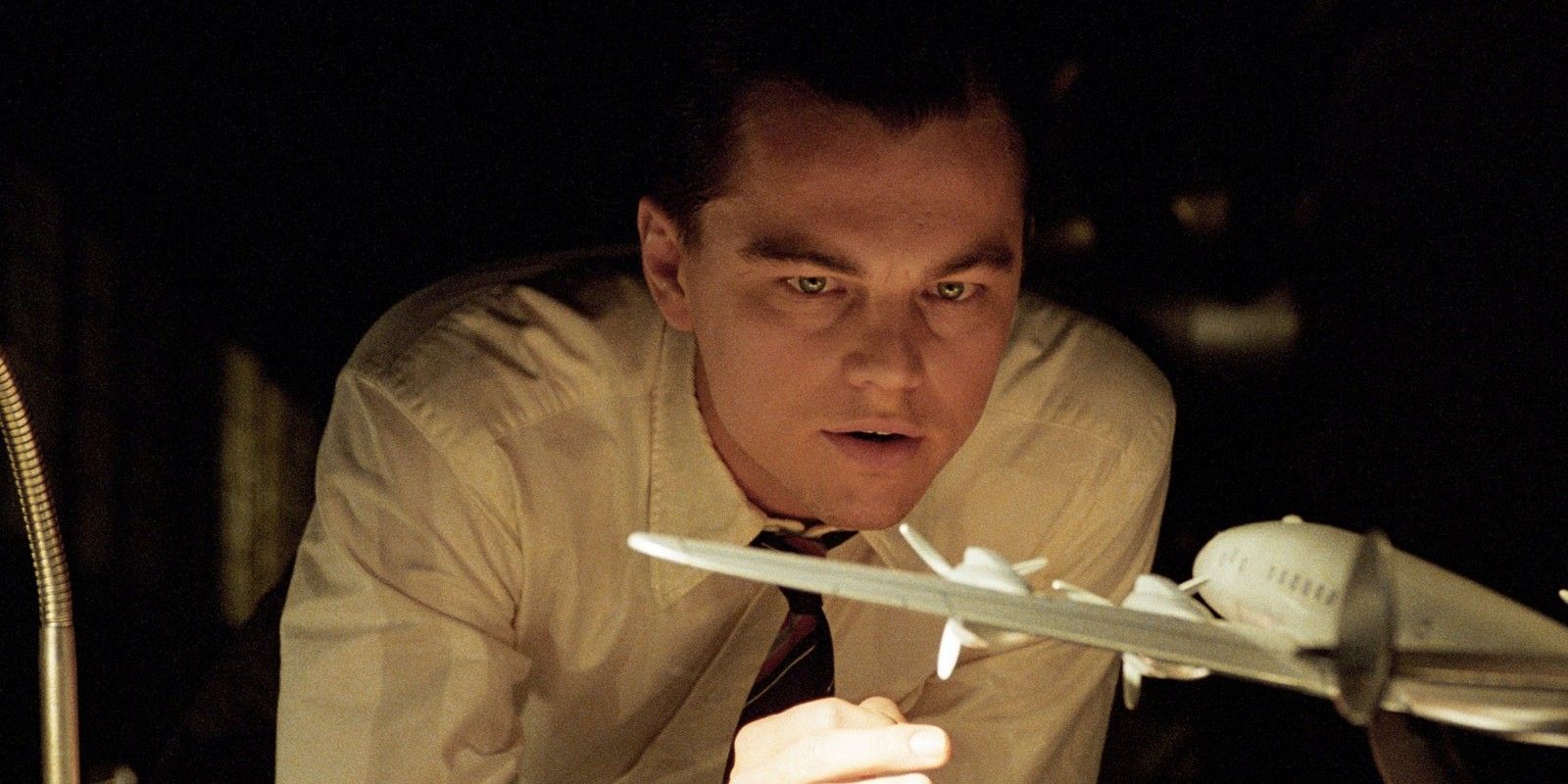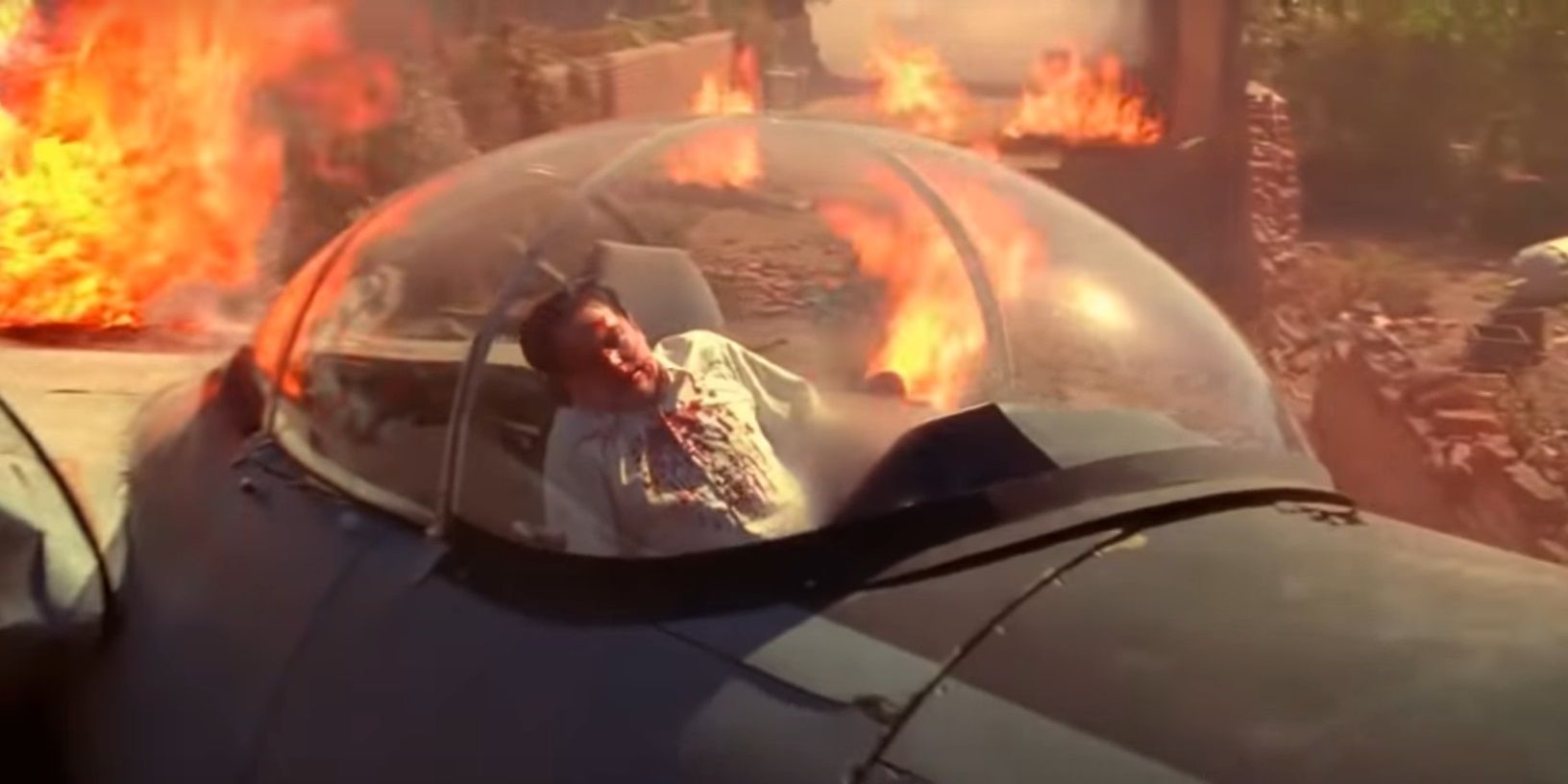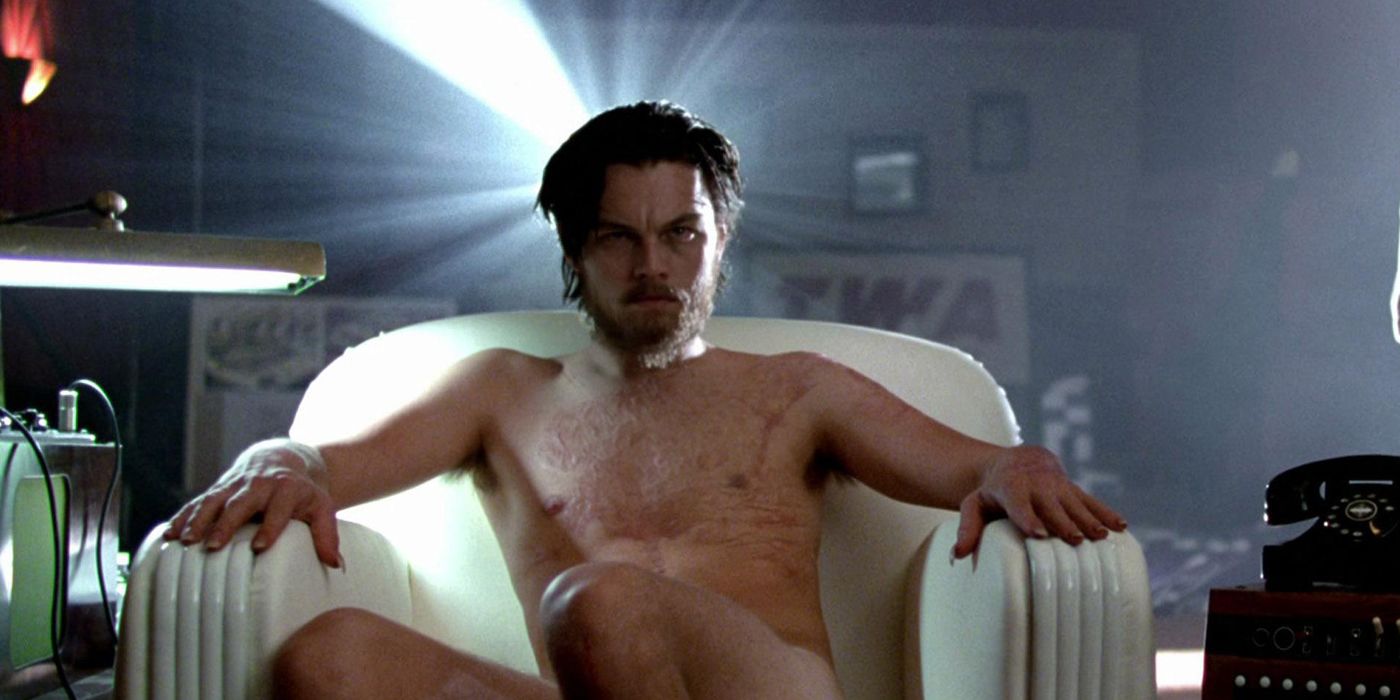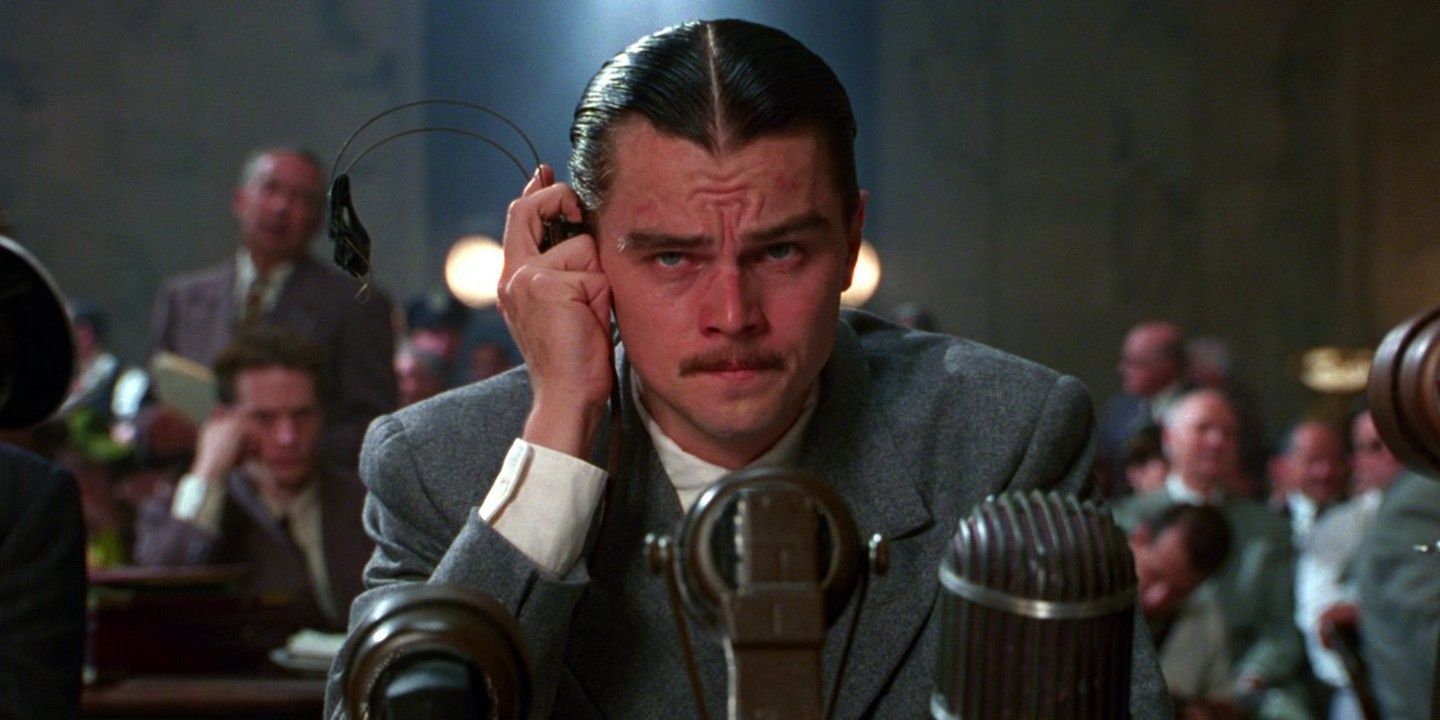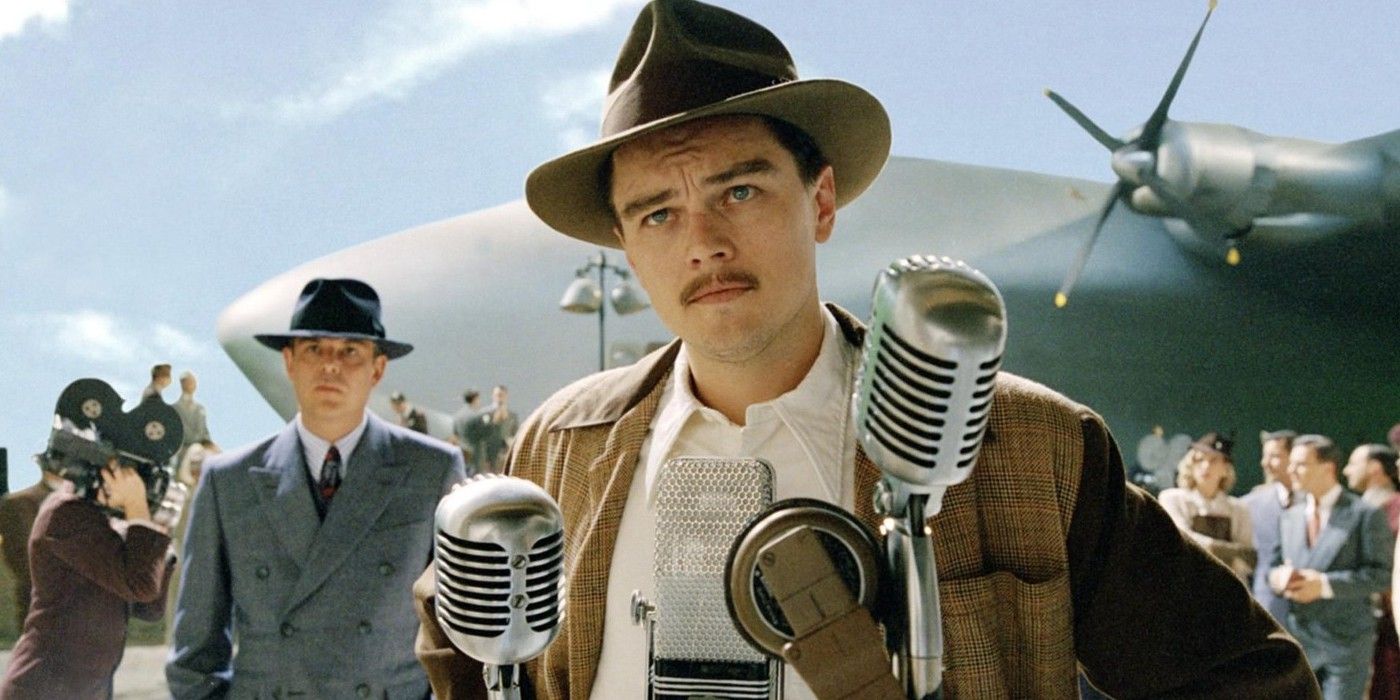Martin Scorsese’s The Aviator received critical acclaim, but there were several things the biographical drama either changed or omitted entirely – likely because the true story is significantly darker. The film was released in 2004 and starred Leonardo DiCaprio as the infamous tycoon Howard Hughes. The Aviator marked the second of five collaborations between the star and renowned director, and the pair are currently filming their next project, the Western crime drama Killers of the Flower Moon.
Spanning the years 1927-1947, The Aviator charts Howard Hughes’ life as a movie producer and aviation pioneer. The movie also carefully documents his deteriorating mental health. Scorsese and Leonardo DiCaprio's attempt to restore Hughes’ reputation as a genius outsider who took on both the motion picture and aviation industries is admirable, but there’s only so much that can be accomplished in one film, even if it lasts 166 minutes.
Portraying Hughes as a sympathetic character meant twisting the truth and downplaying his darkness. Many biopics alter timelines for dramatic effect, or remove characters for simplicity, and chronicling the life of a figure as prolific as Hughes involved glossing over many historical facts. From filmmaking struggles to deeply unsettling behavior towards women to even multiple deaths– the true story behind The Aviator isn’t nearly as glamorous as it appears onscreen.
The Making of Hell’s Angels
Auteur director Scorsese begins his movie with the making of the war film Hell’s Angels and paints Hughes as a naïve but idealistic director completely new to the moviemaking business. The truth is, he already had some experience in the film industry, having produced the Academy Award-winning Two Arabian Knights. While Hell’s Angels was an undeniably costly and overlong production, as The Aviator depicts, the whole story could have made for a fascinating film itself.
Hughes was shown to be a daring director, riding in planes with a camera to capture all the action of his aerial dog fights. What the film didn’t reveal was that he crashed one plane himself and fractured his skull. While Hughes survived, others weren’t so lucky. Three pilots and one mechanic were killed during the making of Hell’s Angels. Today, a tragedy like this could see a production swiftly shut down like Deadpool 2 did, but Hughes persevered with his vision. The Aviator saw Hughes study the audience’s reaction to 1927’s The Jazz Singer – marketed as the first “talkie”, signaling the end of the silent era of cinema. Scorsese’s movie implies Hughes reshot the entirety of Hell’s Angels to incorporate sound, but only partial reshoots took place.
The biopic omits the dismissal of original female star Greta Nissen, who was replaced by Jean Harlow after her voice was deemed unsuitable for the part. Hughes also wasn’t the sole filmmaker; he enlisted James Whale, the future director of Frankenstein, to reshoot scenes requiring dialogue. Hughes even brought a failed lawsuit against the rival film The Dawn Patrol in the long road to completion, fearing it would overshadow his epic. It’s doubtful Scorsese's The Aviator, which eclipsed Christopher Nolan's unmade Howard Hughes biopic, could ever have included all this detail, but it certainly painted Hughes, and the production of Hell’s Angels, in a much better light.
Relationship With Katharine Hepburn
Cate Blanchett won an Oscar for her authentic portrayal of screen icon Katharine Hepburn in The Aviator, who was shown to be in a close, long-term relationship with Hughes following the production of Hell’s Angels. The movie neglected to reflect that Cary Grant introduced the pair several years after the premiere of his war film. The biopic was deliberately vague with the timeline, also changing the suicide of her brother from childhood to later in life to further connect her with Hughes through their shared disdain for the press. Their breakup was portrayed onscreen as more dramatic and hostile than in real life, eliciting sympathy for Hughes. Hepburn did not leave him for Spencer Tracy, although she would later embark upon a famous love affair, like Hollywood with China, with the actor. Instead, her romance with Hughes ended because she wanted to focus on reviving her career after being labeled “box office poison”. The pair remained amicable, with Hughes helping her buy the film rights to The Philadelphia Story.
Relationship With Ava Gardner
The Aviator does acknowledge Hughes’ contentious relationship with Gardner (Kate Beckinsale), but the reality was considerably more alarming. Hughes wasn’t just a controlling boyfriend. There was one occasion where their fight reportedly turned physical. Hughes is said to have punched Gardner, dislocating her jaw, and she thought she had killed him after smashing a glass ashtray over his head. MGM studio boss Louis B. Mayer, who appeared in Mank, kept the altercation hidden from the press, and Hughes recovered, even asking Gardner to marry him. The film’s manipulation of the timeline to have the pair meet earlier than they actually did is unsurprising, but to omit Gardner’s allegation of domestic violence is a disservice to the truth. She claimed she never loved Hughes and called him a racist – another aspect not touched on in the film – but her voice is largely muted in Scorsese’s portrait of a lonely, troubled man.
The Many Women in Hughes’ Life
Scorsese’s movie partially details Hughes’ reputation as a playboy, casually addressing the numerous female stars to which he was supposedly linked. There is an ominous scene where he appears to “audition” Hepburn’s replacement as his lover, with the character a composite of teenage actress Faith Domergue (Kelli Garner) and star Mamie Van Doren. The movie glosses over Hughes’ disturbing relationships and never acknowledges the several claims of sexual harassment leveled at him. After the horrifying number of sexual abuse cases exposed in Hollywood, the decision to overlook the aviation mogul’s attempts to manipulate women and allegedly threaten their careers doesn’t sit well today. The Aviator also implies Hughes was never married, spotlighting his romances with Hepburn and Gardner instead, but he did, in fact, marry twice. While the movie successfully captures Hughes’ feeling of isolation, it’s unfortunate this is at the expense of silencing the many women in his life.
“Charles Howard”
Howard Hughes was an eccentric genius who obsessed over his work, but The Aviator leaves out a peculiar period in the early 1930s where he was employed as a baggage handler for American Airlines. Using the alias “Charles Howard”, he was soon promoted to co-pilot before disappearing after his real identity was uncovered. This event recalls another historical figure played by DiCaprio in the conman film Catch Me If You Can. It’s easy to see why this isn’t included as it would simply be a fun diversion, and perhaps too close to DiCaprio’s previous role.
Vehicular Accidents
One of The Aviator’s most memorable sequences showcases Hughes’ 1946 plane crash in Beverly Hills. The biopic accurately depicts the horror of the event, including his life-threatening injuries and the destruction of three houses. He was rescued by Marine Master Sgt. William L. Durkin, who appears only briefly. However, Hughes was said to have paid the man $200 a month for the rest of his life in gratitude. The incident was convincingly filmed, with an outstanding performance from DiCaprio, but it was far from the only accident tainting the aviator’s legacy.
Hughes was involved in four plane crashes in his life, including his early incident on Hell’s Angels. Yet, The Aviator also ignores a fatal accident from 1943, resulting in the deaths of CAA aviation inspector Ceco Cline and Hughes’ employee, Richard Felt. It’s understandable why this is omitted – not only would it detract from the power of the spy plane crash, but it would cast doubt over his expertise and dedication to aviation. However, there is yet another event that is surprisingly absent from the movie. On July 11th, 1936, Hughes was involved in a car accident in Los Angeles, which killed pedestrian Gabriel S. Meyer. There was speculation over his sobriety - DiCaprio mainly drinks milk in the movie - and a witness changed their story from Hughes’ driving erratically to claiming Meyer walked right in front of the car. Although Hughes was cleared of any wrongdoing, the event could have imbued the film with greater ambiguity surrounding Hughes’ power and integrity.
Mental Health
Scorsese had the difficult task of portraying germophobe Hughes’ obsessive-compulsive disorder (OCD) during a time when there was no medical definition. The Aviator did a commendable job of conveying his suffering and the mental deterioration which plagued his later life, but once again changed the timeline to better suit the underdog story it wanted to tell. Hughes is seen holed up in a screening room where he urinates in glass milk bottles, his hygiene severely neglected. This did occur, but long after the events depicted in the film. The Aviator has him temporarily overpower his disorder to appear before the Senate in 1947 and salvage his reputation, but the truth is he locked himself away for four months in 1958. His fear of germs controlled his later life, and he became a notorious recluse. The movie ends on an ominous note to clearly indicate his problems would persist but took dramatic license with his illness to fit the story’s time span.
Congressional Hearings
Scorsese’s epic documents Hughes’ rivalry between his Trans World Airlines and Juan Trippe’s (Alec Baldwin) Pan American World Airways, which culminated in a Senate hearing where the disgraced pioneer was forced to defend himself against accusations of wasting government money on building aircraft never delivered to the military. The Aviator provides Hughes with an underdog victory against the Senate, counteracting the label of a war profiteer by interrogating Senator Owen Brewster (Alan Alda) over his own questionable reasons for investigating Hughes. The movie claims Brewster was bribed by Pan Am founder Trippe to ruin his competitor, but some allege this was merely fabricated by Hughes to save his image. Regardless, it made for compelling storytelling. Additionally, Brewster did testify but the hearing was actually chaired by Michigan Senator Homer Ferguson. This change was undoubtedly made to condense characters, creating clear antagonists for Hughes to overcome.
The Hercules
At the triumphant climax of the movie, Hughes proves his detractors wrong by finally flying the Hercules, mockingly dubbed “the Spruce Goose”. On November 2nd, 1947, Hughes piloted the massive craft himself, which is shown to soar over newsreel cameras capturing the historic moment. However, this was considerably exaggerated for greater impact in The Aviator. The Hercules airboat only flew once, for roughly one mile at about 70 feet above the water. It was an extremely short trip, neither long nor high enough to conclusively deem the plane a success. Still, it was enough to convince people that Hughes was right, and he didn’t waste government money on a plane that couldn’t fly.
Scorsese delivered a handsome, captivating tale full of strong performances, but The Aviator changed several things to make Howard Hughes a more sympathetic and likable character. The film succeeded in praising his legacy as a pioneer who took on influential organizations, and was accurate in certain events and period detail, but undermined the tragedy of those in Hughes’ orbit. However, these omissions leave plenty of room for another biopic to tackle Hughes’ legacy and pay more respect to the casualties of the eccentric’s domineering life.


